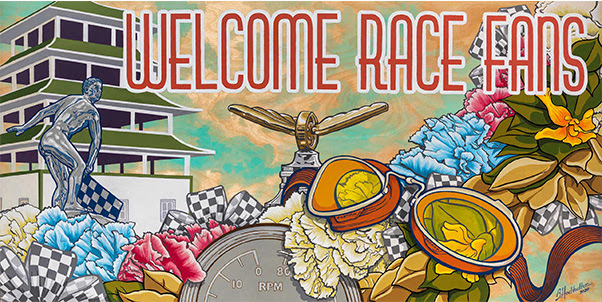Outduels Hard Charger Curtis Turner by Just Five Car Lengths in 1958 Farewell Race to the Sand
DAYTONA BEACH, Fla. (Aug. 11, 2020) – The saying “save the best for last” has never been more true than the 1958 – and final – NASCAR Cup Series race on the storied Daytona beach-road course that used the sands of the beach and the asphalt of A1A to help build the foundation of a sport like no other, NASCAR.
For 10 years, Bill France’s Grand National Series (today the “NASCAR Cup Series”) had seen incredible competition with the ultimate test of man, machine and the elements in a 4.1-mile, sharp hairpin turns course. How appropriate it was that on the 23rd day of February 1958, one of the greatest, most ferocious duals in the sport would occur with Paul Goldsmith holding off Curtis Turner by a mere five car lengths after 160 miles.
Just how did he do it? Five years earlier, Goldsmith had won the DAYTONA 200 for motorcycles on the course, and then to win it behind the wheel of a full-size sedan stock car, he knew something that others didn’t. Once it was known the ’58 race would be the last on the sand, Goldsmith, the only driver to ever win on the beach-road course on two – as well as four – wheels, explained his thought process on how to drive a full lap, which is part of a video found here. The NASCAR Cup Series would move to the new Daytona International Speedway, a 2.5-mile, 31-degree banked track, in 1959.
“I have a tendency to fish tail and spin (the tires) all the way up the entire beach all the way to the north turn,” said Goldsmith. “You get out fairly wide next to the ocean and then you get to soft sand before you get to the hard shell in the (next) banked turn. Your car is pitching and bouncing. About the middle of the turn, you broadside a little bit, and you get a hold of that blacktop (asphalt) and your tires squeal for a little ways, and it starts accelerating tremendously. The speed you reach is in excess of 140 mph.
“There are several spots where all four wheels can leave the ground. That is how rough it is going down through there (on A1A’s asphalt). There is one point where all four wheels must be 6 inches in the air – at least it feels like when you are in the car. Then you touch the brakes when it’s coming down. You drop into the high-banked (south) turn which is shells, clay, dirt and sand. It gets slippery. You can see through the turn, and you are coming out on the beach.”
A field of nearly 50 cars competed – and 31 completed – the race that featured several car makes: Chevrolets, Fords, Buicks, Oldsmobiles, Mercurys, Plymouths, Pontiacs and Dodges. With nine laps to go, Turner, who was in the lead, spun in the surf while trying to pass a lapped car. It opened the door to Goldsmith, who was piloting the No. 3 Pontiac, owned by Smokey Yunick. Turner recovered and almost caught Goldsmith but the victory was sealed. Third went to Jack Smith, with Joe Weatherly fourth and Gwyn Staley fifth.
While NASCAR racing on the beach subsided, a new road course was created inside the new Daytona International Speedway. The unique trioval/road course layout would become the home of the Rolex 24 At Daytona, today North America’s premier sports car event. While the NASCAR Cup Series never competed on the layout, various NASCAR divisions, featuring smaller stock cars did in the 1960s and 1970s. More to come.
Now, more than 60 years later, road course racing – NASCAR style – is back in Daytona Beach, FL. A limited number of fans will get the opportunity to see the Go Bowling 235 At The DAYTONA Road Course, along with the NASCAR Gander RV & Outdoors Truck Series race, on Sunday, Aug. 16. Fans can get tickets, which start at $49 (both races included) for adults and $10 for kids 12 years old and younger, by visiting www.daytonainternationalspeedway.com or calling 1-800-PIT-SHOP.
Fans can stay connected with Daytona International Speedway on Twitter, Facebook, Instagram, Pinterest, YouTube and Snapchat, and by downloading Daytona International Speedway’s mobile app, for the latest Speedway news throughout the season.
About Daytona International Speedway
Daytona International Speedway is a state-of-the-art motorsports facility and was awarded the SportsBusiness Journal’s prestigious Sports Business Award for Sports Facility of the Year in 2016. Daytona International Speedway is the home of “The Great American Race” – the DAYTONA 500. Though the season-opening NASCAR Cup Series event garners most of the attention – as well as the largest audience in motorsports – the approximately 500-acre motorsports complex, also known as the “World Center of Racing,” boasts the most diverse schedule of racing on the globe. In addition to at least nine major event weekends, the Speedway grounds are also used extensively for events that include concerts, civic and social gatherings, car shows, photo shoots, production vehicle testing and police motorcycle training.







